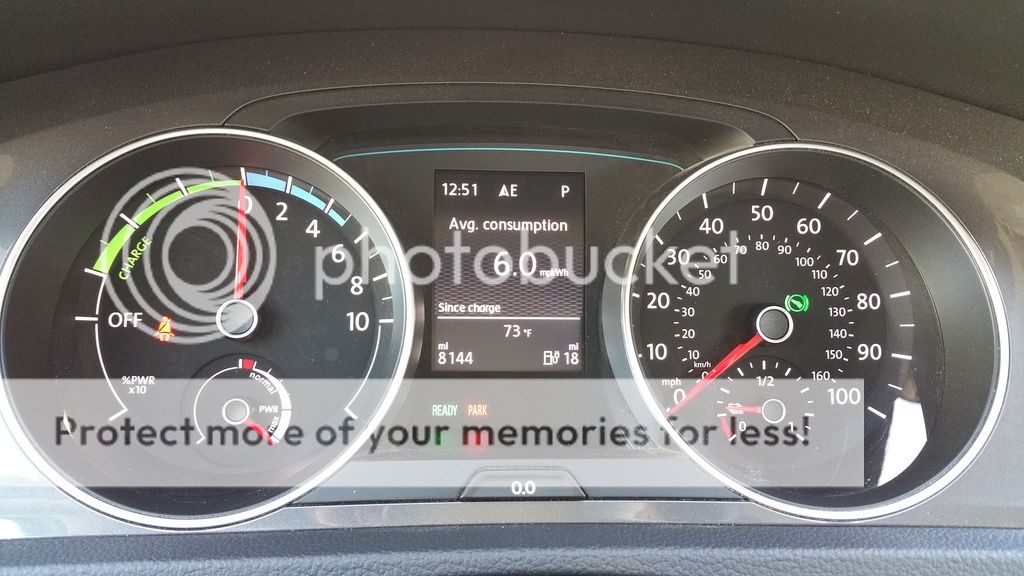miimura
***
The topic of battery degradation was raised by some e-Golf owners in the California desert and Arizona. I don't believe that the e-Golf has any indication of degradation like the Nissan Leaf does, so here is a way for you to track your own usable capacity over time.
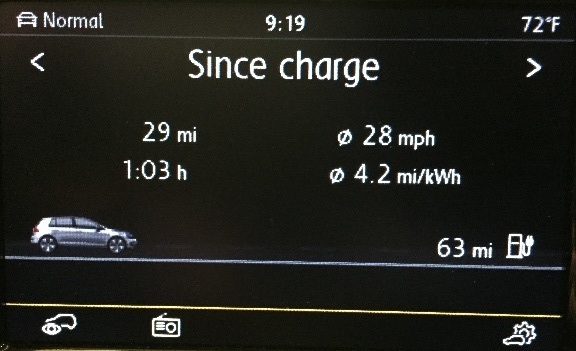
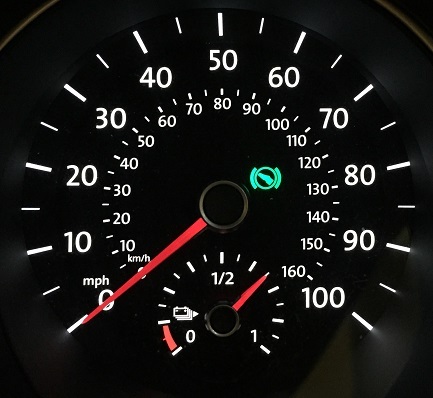
The data above is from October 3, 2015. It shows that I drove 29 miles with an efficiency of 4.2mi/kWh and used exactly 5/16ths of the battery energy.
So, the usable capacity based on this data point is 29mi/4.2mi/kWh * 16/5 = 22.095 kWh
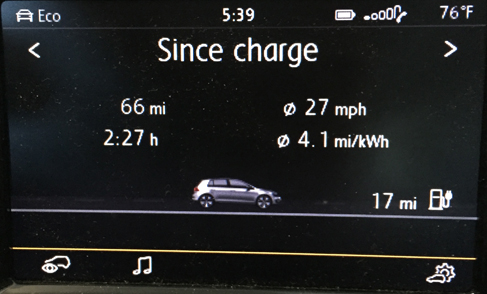
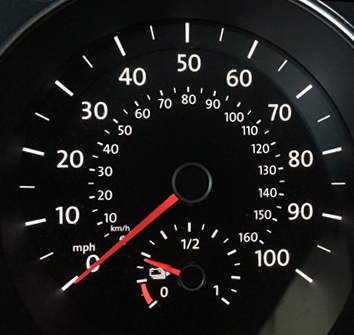
Today, I took my daughter to all her Saturday activities in the e-Golf and drove 66 miles at 4.1mi/kWh and used about 12.3/16ths of the battery capacity, at least according to the gauge. To get another data point on the SOC, I opened the CarNet web site on my phone. The site will render the page differently depending on the aspect of your browser window and if it is narrow it will magically show the battery level in percentage, in a tiny font. My gauge reading of 12.3/16 would leave 23.125% battery remaining.

Well, what do you know, it shows 23%. So, today's usable capacity came to 66mi/4.1mi/kWh * 16 / 12.3 = 20.940 kWh
Obviously, my car did not gain 846 Wh of usable capacity in 8.5 months time. These calculations are not very precise because they are based on data that is only displayed with only two significant digits. Just to illustrate the point, if the efficiency value just ticks over from 4.1 to 4.2, that's a 2.4% change. If you apply that change to the battery capacity, it's basically +/-0.5kWh in the final calculation, just from that one item's contribution.
So, is this all useless because it's so imprecise? Well, not really. If you were to do this calculation regularly, maybe monthly, you would be able to plot them over time and since they would be randomly erring high and low you could fit a trend line to the data. So, the bottom line is that if you really care about your battery degradation, you're going to have to work for it to get a good idea - at least until someone figures out how to extract the car's opinion of its own usable capacity from the CANbus.


The data above is from October 3, 2015. It shows that I drove 29 miles with an efficiency of 4.2mi/kWh and used exactly 5/16ths of the battery energy.
So, the usable capacity based on this data point is 29mi/4.2mi/kWh * 16/5 = 22.095 kWh


Today, I took my daughter to all her Saturday activities in the e-Golf and drove 66 miles at 4.1mi/kWh and used about 12.3/16ths of the battery capacity, at least according to the gauge. To get another data point on the SOC, I opened the CarNet web site on my phone. The site will render the page differently depending on the aspect of your browser window and if it is narrow it will magically show the battery level in percentage, in a tiny font. My gauge reading of 12.3/16 would leave 23.125% battery remaining.

Well, what do you know, it shows 23%. So, today's usable capacity came to 66mi/4.1mi/kWh * 16 / 12.3 = 20.940 kWh
Obviously, my car did not gain 846 Wh of usable capacity in 8.5 months time. These calculations are not very precise because they are based on data that is only displayed with only two significant digits. Just to illustrate the point, if the efficiency value just ticks over from 4.1 to 4.2, that's a 2.4% change. If you apply that change to the battery capacity, it's basically +/-0.5kWh in the final calculation, just from that one item's contribution.
So, is this all useless because it's so imprecise? Well, not really. If you were to do this calculation regularly, maybe monthly, you would be able to plot them over time and since they would be randomly erring high and low you could fit a trend line to the data. So, the bottom line is that if you really care about your battery degradation, you're going to have to work for it to get a good idea - at least until someone figures out how to extract the car's opinion of its own usable capacity from the CANbus.


































